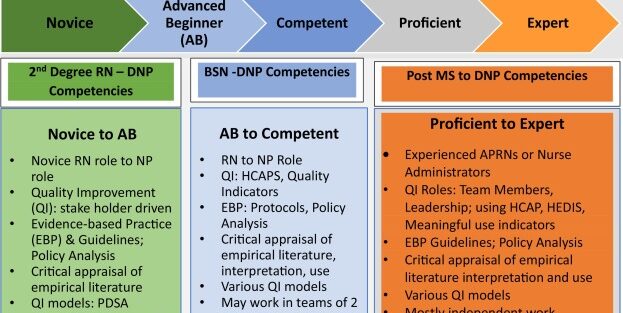Embarking on a Doctor of Nursing Practice (DNP) project can feel overwhelming, especially when it comes to analyzing and interpreting data. Yet, effective data analysis is the heart of evidence-based practice, helping you transform raw information into meaningful insights that drive change in healthcare settings.
This beginner-friendly guide breaks down the essentials of DNP data analysis and interpretation, ensuring you approach this critical phase with clarity and confidence.
Understanding Data in a DNP Project
Data collection and analysis are central to every DNP project. Whether you’re conducting quality improvement initiatives, patient outcome evaluations, or evidence translation projects, your ability to interpret data accurately determines the credibility and impact of your work.
Types of Data You May Encounter:
- Quantitative Data: Numerical data such as patient satisfaction scores, infection rates, or blood pressure readings.
- Qualitative Data: Non-numerical data such as interview transcripts, open-ended survey responses, or focus group discussions.
Each type requires different analysis methods, which we’ll explore below.
Common Data Analysis Methods for DNP Projects
1. Quantitative Data Analysis
Quantitative analysis involves working with numbers to identify trends, measure outcomes, and test hypotheses. Common techniques include:
- Descriptive Statistics: Mean, median, mode, percentages — used to summarize basic features of the data.
- Inferential Statistics: T-tests, chi-square tests, ANOVA — used to determine if results are statistically significant or generalizable.
- Graphical Representations: Charts, histograms, or scatterplots to visualize data trends clearly.
Most DNP students use software like SPSS, Excel, or R to run these analyses.
2. Qualitative Data Analysis
Qualitative analysis focuses on interpreting patterns, themes, and meanings from textual or verbal data. Techniques include:
- Thematic Analysis: Coding data to identify recurring themes or patterns.
- Content Analysis: Categorizing verbal or written material to quantify patterns.
- Narrative Analysis: Understanding experiences through the stories participants share.
Qualitative analysis often uses tools like NVivo, Atlas.ti, or manual coding methods.
Interpreting the Data: Turning Numbers Into Meaning
Data analysis is only part of the process. Interpretation involves explaining what your results mean in the context of your clinical question, setting, and patient population.
Key Considerations for Data Interpretation:
✔ Compare results to your project goals or objectives
✔ Consider clinical significance, not just statistical significance
✔ Relate findings to existing literature and evidence-based guidelines
✔ Reflect on limitations or unexpected outcomes
✔ Discuss implications for practice, policy, and future research
Example:
If your DNP project aimed to reduce hospital readmission rates and your data shows a 15% decrease, interpret what this means for patient care, costs, or quality improvement.
Need Professional Help With DNP Capstone or IRB Application?
Take the stress out of your DNP journey with expert support. Click here to get professional help today.
Common Challenges in Data Analysis & How to Overcome Them
Many DNP students face hurdles when analyzing data. Here’s how to manage common pitfalls:
- Unfamiliarity with Software: Invest time in tutorials or seek assistance from a statistician or mentor.
- Data Quality Issues: Ensure accurate data collection and address missing or incomplete data early.
- Difficulty Interpreting Complex Results: Collaborate with faculty advisors or data experts to ensure correct interpretation.
Remember, the goal is to produce reliable, actionable findings that enhance healthcare outcomes.
Final Thoughts
Data analysis and interpretation may seem daunting at first, but with a structured approach, the right tools, and a clear understanding of your project’s goals, you can confidently translate your findings into meaningful practice improvements.
As a DNP student, mastering this skill not only strengthens your project but also equips you to drive positive change in real-world healthcare settings.




